 by our College Data Analytics Team
by our College Data Analytics TeamMillsaps total enrollment is approximately 712 students. 660 are undergraduates and 30 are graduate students.
Male/Female Breakdown of Undergraduates
The full-time Millsaps undergraduate population is made up of 56% women, and 44% men.
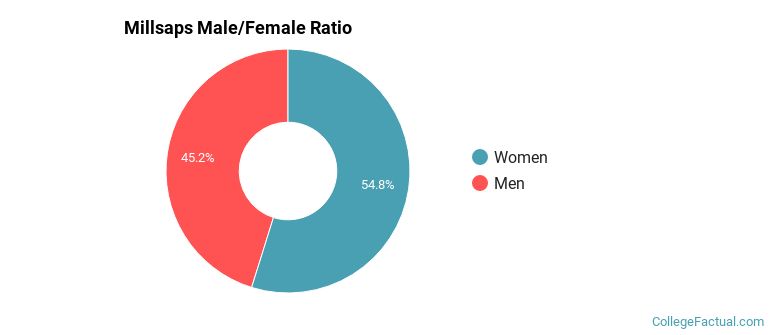
For the gender breakdown for all students, go here.
Millsaps Racial/Ethnic Breakdown of Undergraduates

| Race/Ethnicity | Number |
|---|---|
| White | 401 |
| Black or African American | 163 |
| Hispanic | 35 |
| International | 20 |
| Asian | 19 |
| Unknown | 18 |
| Native Hawaiian or Pacific Islander | 0 |
| Multi-Ethnic | 0 |
See racial/ethnic breakdown for all students.
Male/Female Breakdown of Graduate Students
About 30% of full-time grad students are women, and 70% men.
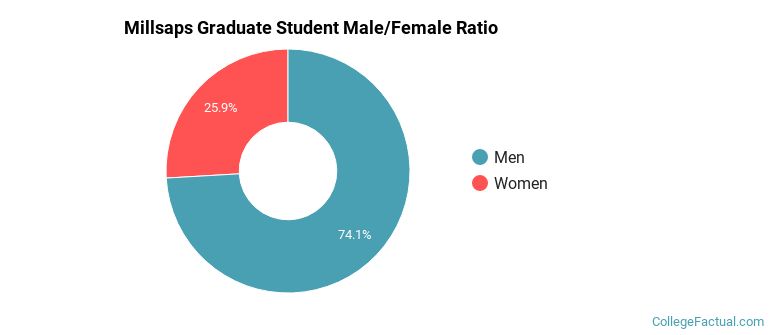
For the gender breakdown for all students, go here.
Millsaps Racial-Ethnic Breakdown of Graduate Students
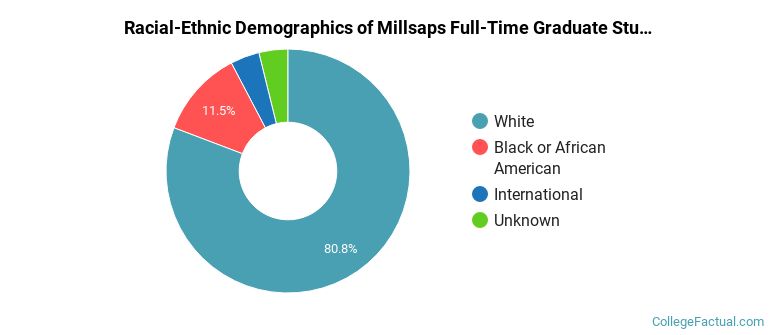
| Race/Ethnicity | Number |
|---|---|
| White | 16 |
| Black or African American | 6 |
| Unknown | 5 |
| Asian | 1 |
| Hispanic | 1 |
| International | 1 |
| Native Hawaiian or Pacific Islander | 0 |
| Multi-Ethnic | 0 |
See racial/ethnic breakdown for all students.
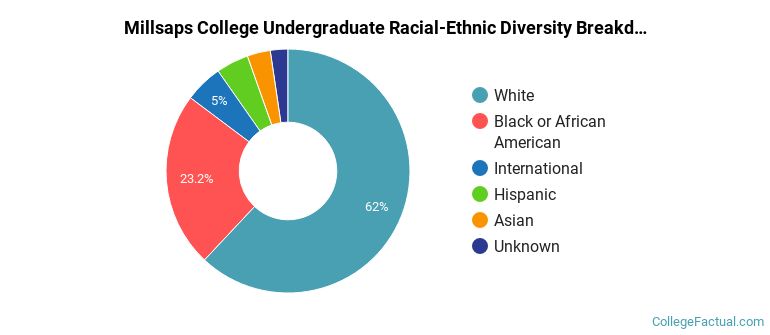
| Race/Ethnicity | Number |
|---|---|
| White | 434 |
| Black or African American | 171 |
| Hispanic | 36 |
| Unknown | 26 |
| International | 21 |
| Asian | 20 |
| Native Hawaiian or Pacific Islander | 0 |
| Multi-Ethnic | 0 |

There are approximately 382 female students and 330 male students at Millsaps.
Millsaps ranks 636 out of 2,183 when it comes to geographic diversity.
61.22% of Millsaps students come from out of state, and 2.78% come from out of the country.

The undergraduate student body is split among 15 states (may include Washington D.C.). Click on the map for more detail.
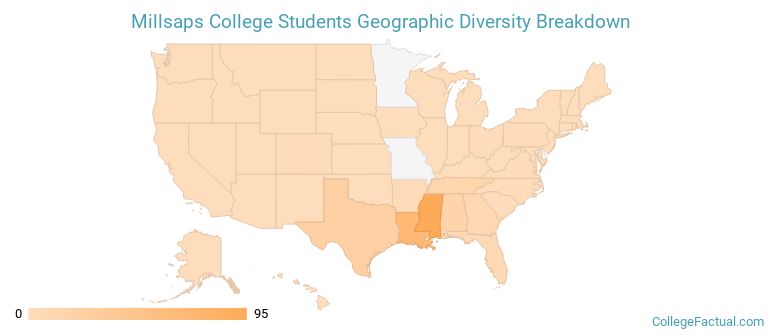
| State | Amount |
|---|---|
| Mississippi | 95 |
| Louisiana | 69 |
| Texas | 24 |
| Alabama | 16 |
| Tennessee | 13 |
Students from 31 countries are represented at this school, with the majority of the international students coming from China, Germany, and Rwanda.
Learn more about international students at Millsaps.
A traditional college student is defined as being between the ages of 18-21. At Millsaps, 87.78% of students fall into that category, compared to the national average of 60%.
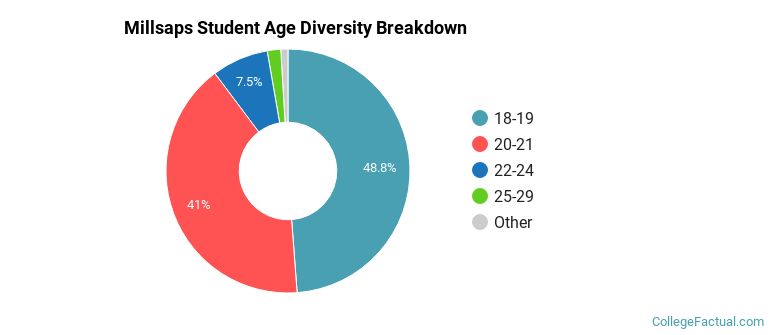
| Student Age Group | Amount |
|---|---|
| 18-19 | 410 |
| 20-21 | 344 |
| 22-24 | 63 |
| 25-29 | 15 |
| 35 and over | 6 |
| 30-34 | 2 |
| Under 18 | 0 |
Footnotes
*The racial-ethnic minorities count is calculated by taking the total number of students and subtracting white students, international students, and students whose race/ethnicity was unknown. This number is then divided by the total number of students at the school to obtain the racial-ethnic minorities percentage.
References
Department of Homeland Security Citizenship and Immigration Services
Image Credit: By RebelNation1947 under License
Learn more about how College Factual creates their Diversity Rankings.